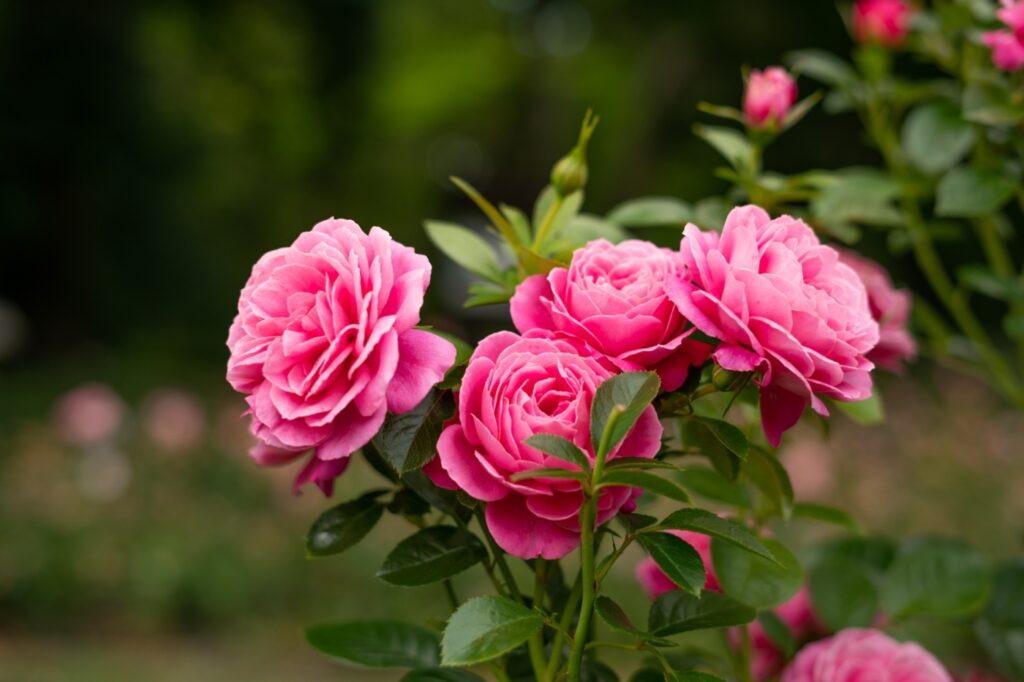
1. Divide and repot Cymbidium orchids. Although Cymbidiums bloom in the winter, their flowers may continue to develop through April, but usually they are done by May. Keep in mind that a Cymbidium blooms best when crowded, so it should completely fill the pot before you divide it. Cymbidium flower spikes grow from pseudobulbs that protrude above the soil surface, and each pseudobulb flowers only once. However, the spent pseudobulbs continue to store food so that when dividing your plant make sure to replant them too. To be safe, include four of these spent bulbs for every three bulbs with green shoots. Soak your plant before dividing and repotting. If it’s growing in a plastic pot, you may have to cut the pot into pieces in order to extract the orchid. Remove dead roots and cleave the root mass with a knife or other cutting utensil that has been dipped in isopropyl (rubbing) alcohol. Place each division in a pot only an inch or two bigger than the diameter of its root ball. Use small redwood bark pieces for a rooting medium and soak well after repotting is complete. If you begin fertilizing in June you should see some flowers next winter.
2. In Southern California, plants grow fastest in May and so fertilization is necessary to keep up with their growth. Fertilize summer-blooming bulbs with a balanced fertilizer – where the three numbers (representing percentages of nitrogen, phosphorus, and potassium) on the fertilizer product, separated by dashes, are equal or nearly so. Fertilize blueberries, azaleas, camellias, hydrangeas, and nasturtiums with a product for acid-loving plants. All summer vegetables will benefit from a side-dressing (applied topically around the plant) of aged manure or compost. If citrus trees or gardenias show leaves with green veins but yellow interveinal spaces or other irregular color, apply liquid fertilizer through the foliage. Most indoor plants will also respond well to a balanced fertilizer, as long as it’s formulated for houseplants, while African violets and orchids benefit from fertilizers blended for their specific floriferous needs.
3. Snails have vanished from most Los Angeles and Orange County neighborhoods. However, they still may be found in less populated, wilderness areas where coyotes prey on wildlife (squirrels, rats, opossums and raccoons) that appear, otherwise, to have brought snails under control in recent years. One way of combating the pestiferous brown snail is with carnivorous decollate snails whose diminutive one-inch conical shells resemble conch shells (home to sea snails) found on the beach. Decollate snails feed on juvenile brown snails as well as their eggs. The only problem is that all the Internet vendors who grow decollates are currently out of stock. An enterprising individual could do well, I imagine, by mass-producing these carnivorous mollusks. I have found that consistent handpicking each morning for two to three weeks is a simple way to control snails. You can also lay boards in your garden; snails will cling to the boards’ undersides from where you can deposit them in the trash. There are also snail hotels and slug saloons, trapping devices available through the rinconvitova.com website.
4. When we have “May gray” conditions – where a marine layer hovers above or morning overcast skies prevail – powdery mildew proliferates on rose bushes. To combat it, hose down your roses in the early morning in order to knock off spores of the powdery mildew fungus. Powdery mildew spores germinate in morning dew that settles on leaves and remains there for four hours so that, absent morning sun on an overcast day, spore germination is likely. You can prevent powdery mildew, rust, and blackspot fungus on roses through application of BioAdvanced Rose & Flower Care, which also contains fertilizer, every six weeks. Once plants are affected with mildew, you can apply neem oil or Ultra-Fine oil to mitigate its presence. Finally, you can make your own anti-mildew spray from a formula consisting of one and a half tablespoons of baking soda, one tablespoon of dish soap, and one tablespoon of any vegetable or cooking oil. Dissolve this mixture into one gallon of water and spray it on your roses’ foliage once a week.
Related Articles
Why this avocado grower says you don’t need to fertilize your trees
8 nostalgic garden flowers worth revisiting for charm, aroma
How to use less water to care for your lawn with this helpful tip
Hollywood ‘fixer’ seeks design help to downsize and fix up a fixer
Ferns, roses and sweet potatoes: Things to do in the garden this week
5. As a general rule, consider applying the following number of gallons of water on a weekly basis to a five-foot row of the following summer crops, as follows: beets – 3; squash, cucumber – at least 3; radishes, carrots, peppers, potatoes – 3-6; beans, corn, and tomatoes – 6, according to “The Old Farmer’s Almanac Vegetable Gardener’s Handbook” (Yankee Publishing, 2019). Where fruit trees are concerned, age matters. As long as you have a soil that drains well, young trees should be irrigated when the soil is dry at a two-inch depth while older trees may be watered when the soil is dry at a four-inch depth or deeper, depending on the type and size of the tree. Greg Alder (gregalder.com) has come up with a general rule where fruit tree irrigation is concerned: “If the fruit tree is two feet wide (about as wide as your body), then give it two gallons each week. If the fruit tree is five feet wide (about as wide as your wingspan), then give it ten gallons each week. If the fruit tree is ten feet wide (about as wide as a driveway), then give it fifty gallons each week.” It’s worth noting that Alder irrigates exclusively with drip emitters or mini-sprinklers. Keep in mind that, the above rule notwithstanding, avocadoes are the thirstiest fruit trees, citrus needing less water, and deciduous trees requiring even less.
Please send questions, comments, and photos to joshua@perfectplants.com.
